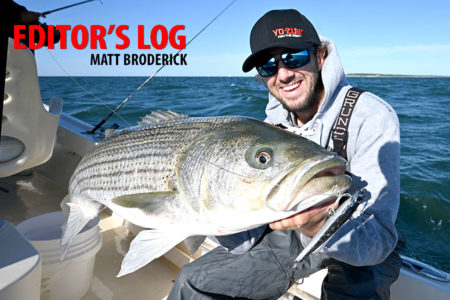“So what’s up with summer flounder?” It used to be that providing an answer to the fluke season, size and bag question was fairly simple as of April 1. Perhaps that all changed in 2017 when New Jersey successfully countered the arbitrary and capricious findings of the Atlantic States Marine Fisheries Commission (ASMFC), the Mid-Atlantic Fisheries Management Council (MAFMC) and the National Marine Fisheries Service (NMFS).
Last year New Jersey made an irrefutable argument to the Commerce Department against the 19-inch size limit mandated by ASMFC, MAFMC and NMFS, which would have led to mortality rates on undersized fluke that equaled or eclipsed the entire seasonal keeper harvest. Let that soak in for a moment; when you consider a 10% mortality rate on released fluke, accepting a 19-inch size limit we could’ve killed more throwback fish than would have actually been kept!
Regrettably, that Christie administration position may have led to some blowback this year from fisheries managers, with Governor Murphy seemingly unable to defend New Jersey at the regional and federal level. I guess it’s possible, of course, that the Governor and his new DEP commissioner Catherine McCabe simply don’t really care.
On March 15, the New Jersey Marine Fisheries Council (Council) met in Stafford Township at the annual meeting where seasons usually get set. Because ASMFC was playing games with sea bass (see the February “Editor’s Log” about the 7,000 mystery sea bass caught from shore) and because the Council’s advisory board failed to meet to review options, there was little that could be done until the next time Council meets at 5 p.m. on April 5 at the Bay Avenue Community Center in Manahawkin, NJ.
Folks weren’t happy with Christie’s folks for not protesting enough in 2017; so what’s that say about the Murphy administration not doing much of anything about fishing in 2018? From a silver lining perspective, credit must be given directly to The Fisherman readers and advertisers who’ve supported the Save the Summer Flounder Fishery Fund (SSFFF); you folks helped contribute to a groundbreaking sex-structured model created by Dr. Patrick Sullivan of Cornell University presented earlier this year to the NMFS Stock Assessment Workshop, which should help provide a clearer picture of the summer flounder population.
Based on 10 years of research conducted by the SSFFF team of scientists including Dr. Sullivan and renowned fisheries researcher Dr. Mark Maunder, a new comprehensive stock assessment model incorporating the latest scientific findings may prove invaluable (and perhaps incontrovertible) in the argument against status quo fluke management. SSFFF hopes new sex and length catch composition data gathered by the Cornell and Rutgers team will ultimately lead to new management actions that allow spawning females a better degree of protection.
In simpler, more direct terms, researchers from well-respected universities may actually alter the federal government’s stubborn and steadfast defense of their own “best available science” through better, more comprehensive science. Fishermen realize that throwing back dead, undersized males while exclusively targeting big old, fat, fecund, female fish is no way to manage a fishery; it appears the science may in fact support those onwater observations.
The process for developing the next benchmark assessment on fluke is just starting, and SSFFF experts will have significant input in the scientific process. While folks in Delaware (365 days of fishing at a 16-1/2-inch size limit in 2018) may cast a skeptical eye, New Jersey fishermen (104 days at 18 inches in 2018) hope that improved science and data collection will help all aspects of the fishery.
It would be nice to see Murphy and McCabe (and DEP deputy commissioner Debbie Mans for that matter) wade into the fisheries debate on behalf of coastal fishermen; with support from researchers at the State University at Rutgers, you’d think that’s a pretty easy call. I’ve dialed the Trenton number a few times already this year looking for answers, and have yet to receive much of a response to anything related to recreational fishing. We know those dogs don’t hunt; regrettably, I don’t think they fish either.
(Ed. As soon as the DEP publishes the 2018 New Jersey Marine Digest, we’ll update the regulations in The Fisherman Magazine as well.)




